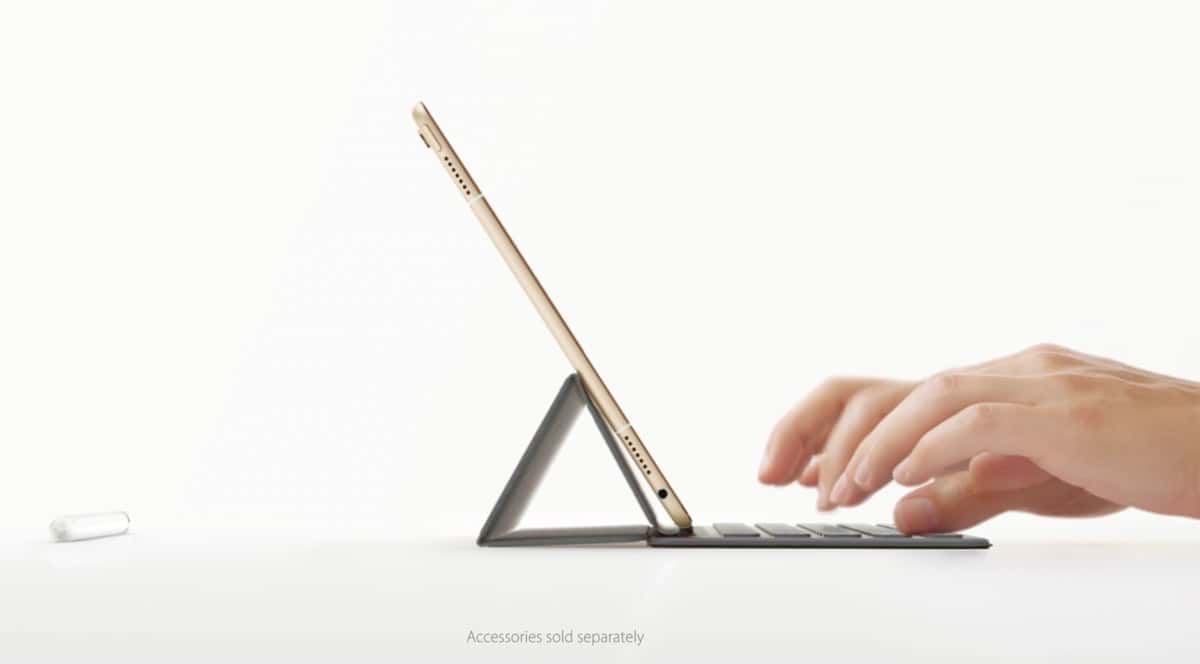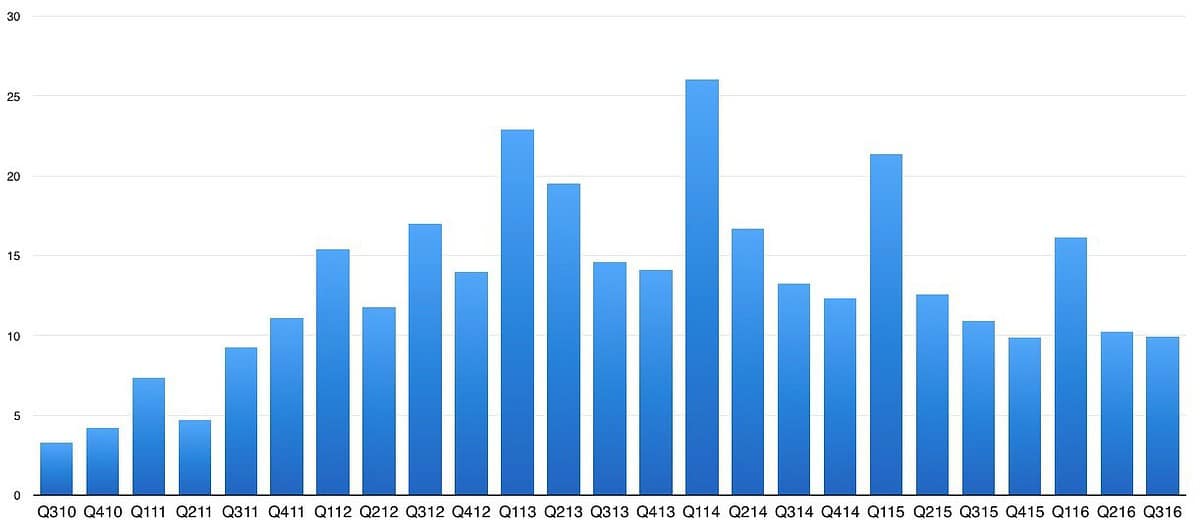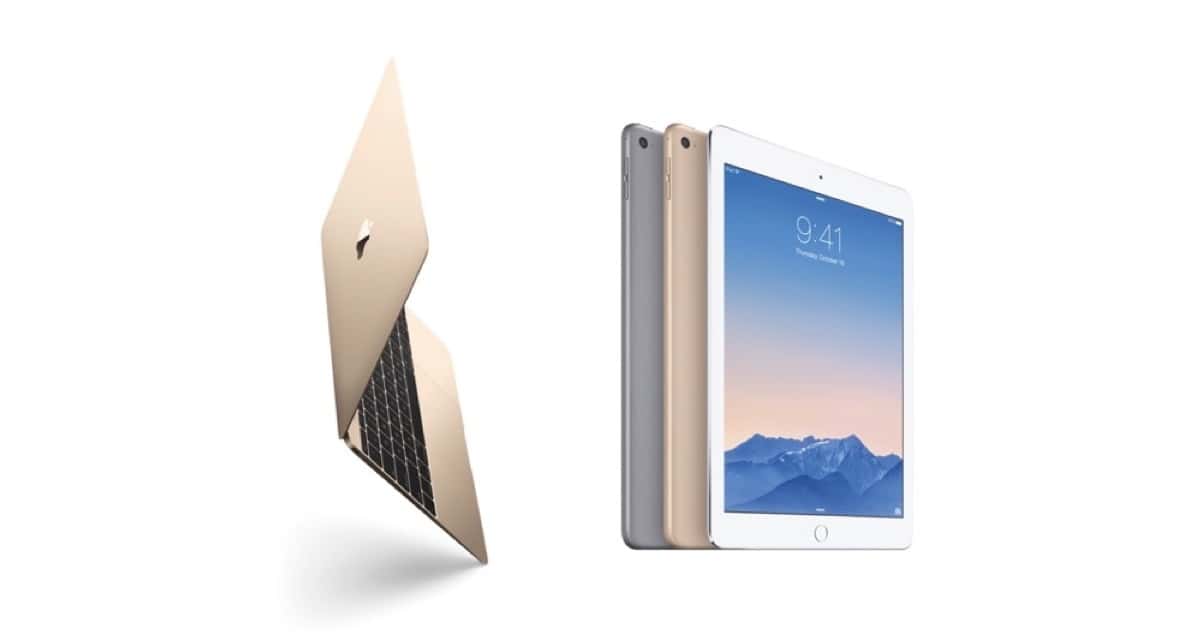The early iPads were a sensation. It seemed that Steve Jobs had brought forth the successor to the Mac. However, things have not gone as planned with the iPad, and Apple is scrambling to construct a clearer branding and imperative for the iPad. Even Microsoft senses the difficulty and has poked fun at Apple’s newfound toaster-fridge mentality.

At 30 seconds into this video from 1994 Steve Jobs says that the Macintosh is on the verge of becoming obsolete. To be sure, that was in the context of the old, vastly inferior Mac OS 7. Switching to a BSD Unix breathed new life into the Mac for many years, indeed decades to come. Still, tech time marches on.
In early 2010, when [Mac] OS X was ten years old, Apple introduced the iPad. The thinking at the time was that this was the next step in the evolution of personal computing. It was surmised by most that the iPad would quickly surpass the PC market in sales, and its wide spread adoption would be the Next Big Thing.
We reveled in the purity of the iPad. There was no need for a stylus, a point made strongly by Mr. Jobs himself referring to the design of tablets.
“If you see a stylus, they blew it.”
Just as the iPhone, with its virtual keyboard, made the BlackBerrys look and feel ridiculous, the iPad required no keyboard. Apple refused to sell third party keyboards in the retail stores. Even so, some companies made good money serving the modest percentage of customers who wanted a real keyboard.
In a distillation of the iPad notion, Tim Cook has said:
“The iPad is the clearest expression of our vision of the future of personal computing.”
A Funny Thing Happened
What happened next was unexpected. In 2014, iPad sales peaked and then the rate of sales growth became negative. All kinds of explanations have been offered to this complex issue. I won’t rehash them except to note that, perhaps, the iPad was able to replace the Mac and PC for a smaller fraction of customers than had been estimated.

The Mac has unexpectedly endured. Flourished.
In order to revitalize the iPad, Apple has explored many ideas. Much faster A[X] SoCs have helped, but that hasn’t translated into pervasive iPad cravings. iOS 9 and 10 have been revised to confer more power on the user to get things done. Features such as Slide Over, Split View and Picture in Picture have been introduced. Apple has introduced a rather capable stylus called the Apple Pencil and has legitimized the keyboard.
The sum of this effort so far, however, has served to both create a new iPad narrative and also muddy the branding waters. On one hand, it seems to make sense that if the iPad were to appeal to a broader audience, sales could be resuscitated. On the other, Apple may have backed itself into a corner. The result is the following ad.
https://youtube.com/watch?v=1zPYW6Ipgok
Upon seeing this ad, our own Bryan Chaffin felt that it was basically a Surface Pro ad featuring an iPad Pro. In other words, Microsoft may have had the crisper vision all along in that portable computing devices still need a stylus and a keyboard for serious work, must have an Intel processor to run X86 binaries and need the full power of a productivity OS like Windows 10. Oh, how times have changed.
Next page: Microsoft keeps the faith and has some fun with Apple’s ad.

John (& Bryan):
Without doubt, something is fuzzy and out of focus, although in my view (no pun intended) it is not Apple’s strategy for the iPad. That the normally incisive voices at TMO, which peal clarion-like against the background of the bemused white noise of muddled analysis and click-bait artistry, should wax ambivalent about the messaging and marketing strategy of the iPad, and to some extent, embrace MS’s marketing message that Apple is a Johnny-come-lately with their version of MS’s toaster-fridge, suggests fumbled messaging by Apple.
I see this very differently.
While I concede that many very knowledgeable and intelligent analysts believe that the post-PC era was/is about a PC replacement device, and that since the iPad, including the Pro models, do not replace the PC in use case and functional capacity, the iPad has therefore failed as a PC replacement, I see this as fundamental misconception.
One consequence of this fogginess is that it creates a climate in which equivalence can be drawn between two quite distinct devices (the iPad and the Surface Pro) that can compete in the same niche in which many formerly PC-exclusive capabilities can now be done by touchscreen capable devices. For some analysts, this appears to be an attempt to move beyond the PC, and because both have a touch screen and both can use a keyboard, and since MS had their dedicated keyboard first, Apple is merely following after MS. And that both are trying to create post-PC toaster fridge.
Where even to begin?
I suggest that we begin with context, namely the long game of building a comprehensive platform that Apple appear to be doing (and which TC appears to be arguing, however unsuccessfully https://www.macobserver.com/columns-opinions/the-back-page/tim-cooks-apple-ambitions-include-health-care-everything-part-life/). This platform includes an integrated and functionally complementary system of devices and services that free the user from conforming their work and play to the limitations of a single device (the PC) to working and playing in a wide arena that enhances not only productivity, but creativity and the joy in doing so.
In my view, this is what the post-PC era is, and nothing that I have seen from Apple or heard in any address appears, again in my layman’s view, to contradict this. In that endeavour, the iPad is born. And because that platform includes many capable options, Apple can take their time to develop and extend the capability of this device and evolve its role in that platform. Will this device appeal to everyone and even address the same needs for each individual? Of course not, but bear in mind, we are in an arc that will be measured not in fiscal quarters, but likely in generations, and a generation has already been born that is being reared on the touch screen. Make no mistake, Apple know this, and hence the investment in iOS. It is the future, which conceptually is not synonymous with, ‘the Mac and OS X are not the future’. This is not a zero sum enterprise.
As to the specific advert in which Apple demonstrate a specific use case in which the Surface competes, to me it is clear that Apple are saying, ‘Ours is a robust and versatile device. If what drives you to want the Surface is this feature set, then behold. We give you, the iPad. It does that, too. And then some’. The ‘and then some’ includes that fact that it is a fully functional device without any add-ons, something that cannot be said for the Surface.
All this is to simply say that, as this platform continues to expand, and the iPad itself becomes more capable, its use case amongst a nascent clientele will co-evolve into something this present (and passing) generation can only dimly suspect, but cannot replicate because we’re simply not there yet.
It’s not about ‘keeping the faith’, but like Magellan, reading the currents and knowing where you’re going, to that pass in the South, even if no one else can quite see it as you do.
That’s not faith, but the knowledge-based execution of a plan.
It’s still relative though. “Real work” on an iPad Pro to me REQUIRES the large one. For painting and illustration there is never enough screen real estate, so for me the 9.7″ is a compromise.
I don’t think Microsoft had the right idea all along at all. The 9.7″ iPad is as nearly a perfect computing device for what it was designed to do as anything designed before or since. A Surface or iPad Pro are a different animal, a hybrid of the tablet and laptop. They’re both a compromise for either function. When I do “real work”, I have the 9.7″ iPad right next to the laptop. It takes no reconfiguring. I have the right tools for whatever it is I need to do. Why compromise?
Re-posting.
Hey guys! I don’t comment much, but read you guys frequently and enjoy the podcasts quite a bit. 🙂
Now that that’s out of the way. Could John please point out to me when Apple started shipping OSX on the iPad? This, IMO, is the point of the “what is a computer” commercial. Apple is not selling a toaster/fridge until they sell a Surface like device aka a tablet that runs an OS designed for a mouse.
I am the market that Apple was aiming that commercial at, except I replaced my MacBook Air with an iPad Pro as soon as I could get my hands on one. I use it as my “computer”. But, for teaching, its better than a MacBook because of the pencil, in conjunction with presenting things in class. I think Microsoft, and John and Bryan, unfortunately missed the point of the Apple ad. That’s still apples fault, though, for not making the point clearly enough. I don’t see flailing for a correct vision for the iPad, but an evolution of the ipads capabilities that made it suitable for me to replace my Mac (and Apple highlighted this reality in an ad).
I agree with you that they messed up, especially with the Pro, but I think they screwed up by not promoting what it really was and how it was revolutionary. The iPad Pro is a visual creative device that finally realized the potential of the original iPad as a digital art/illustration platform. It’s a creative professional’s tool that is a companion to their desktop, not a laptop replacement. The fact that the Pencil exists proves that point in my opinion. But someone got scared by the Surface and tried to promote it as a do-all machine and all that succeeded in doing is muddy what the Pro was for and make it compete with the MacBook Air for no reason.
BTW, the auto-login feature on MacObserver still doesn’t work.